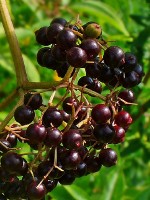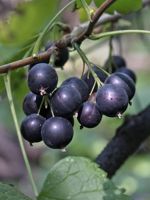Mon-Fri 9am - 5pm Mountain time
Ranch Elderberry vs Northern Black Currant
Sambucus canadensis Ranch
Ribes hudsonianum
NOT AVAILABLE THIS SEASON - MIGHT RETURN
CUSTOM GROW
Ranch Elderberry is a vigorous and high-yielding Black Elderberry cultivar. It ripens earlier than other varieties and is smaller and more compact making berry harvest easier. The berries are well-suited for baked goods, jams, jellies, and syrups. They are high in vitamin C and reported to be beneficial for the immune system.
Black Elderberries are considered to be partially self-pollinating. So while they will still produce some berries without cross-pollination, planting with another variety will increase yields. Consider planting with Black Elderberry or Bob Gordon Elderberry.
Warning: the seeds, stems, leaves, roots, and uncooked berries are toxic to humans when eaten in quantity. Berries should be cooked to make them safe for human consumption.
Northern Black Currant is a native deciduous shrub found across Canada and the northern United States. Dark purple to black berries that ripen in summer and provide food for wildlife and humans. Fragrant yellow-green flowers that attract a wide variety of pollinators.
This shrub is well adapted to moist soils and can even survive periods of flooding. It has an interesting bronze colour in fall.
Ranch Elderberry Quick Facts
Northern Black Currant Quick Facts
Toxicity: leaves, stems, and uncooked berries are poisonous to humans

